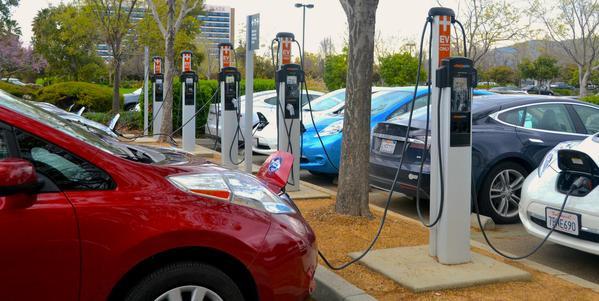You might be familiar with hydrogen technology, a novel method addressing our increasing thirst for renewable energy alternatives. With each passing year, sustainable power gains more traction, stimulating the brains of researchers and scientists to innovate ways of energy production and storage with less environmental impact.
Nestled within these innovations, hydrogen technology stands out, promising not just a leap into clean energy, but also a revolution in water storage and energy saving.
Buckle up for this blog post, where we’ll embark on a journey through how these exciting technologies are molding the contours of our contemporary world, all whilst preserving our dear Mother Nature.
A Deeper Understanding of Hydrogen Technology
Before we take a deep dive into the ongoing advancements, it’s pivotal to grasp what hydrogen technology fundamentally is.
Chances are, you are aware that hydrogen is one of the most abundant elements on our blue orb, accounting for approximately 75% of our atmosphere by mass.
What might surprise you though, is the multifarious ways this element can be tapped – from generating clean electricity using fuel cells right to powering an eco-friendly method of transportation.
This all begins with water electrolysis – a process where electrical current disassembles water molecules into discrete oxygen and hydrogen gasses.
While some conventional methods depend on fossil fuels to manufacture hydrogen, contemporary developments aim to leverage renewable energy resources to promote greener production undertakings.
Being emission-free at the point of use (only exhaling water vapor when used in fuel cells), it isn’t hard to understand why hydrogen technologies are touted to potentially revolutionize energy supply chains globally.
Water Storage: Bigger than you Thought
By now, you might be wondering how hydrogen technology can improve water storage solutions. To understand this, let’s take a closer look at the role of hydrogen in such systems.
In conventional water storage methods, multiple factors limit the available capacity – including evaporation losses and geological constraints. The idea behind using hydrogen in these applications is that once it gets produced from water through electrolysis, it no longer has to remain stored as an independent element.
Instead of dealing with large storage structures for water like tanks and reservoirs, hydrogen can be efficiently compressed into containers or even injected into underground rock formations.
When needed again for power generation or other uses, the hydrogen undergoes another process (such as fuel cell catalytic conversion) and turns back into energy and pure water. This ingenious method thereby eliminates many problems associated with traditional water storage while still preserving the natural resource we all rely on.
Hydrogen-Powered Energy Savings: How Does it Work?
Saving energy has become more critical than ever before due to global climate change concerns and increased awareness about Earth’s finite resources.
Hydrogen technology, including fuel cells that are on sale, inherently exhibits impressive energy-saving capabilities mainly thanks to operating with efficiency rates far beyond those of combustion engines..
Fuel cells work by combining hydrogen and oxygen to generate electricity without burning any fossil fuels – releasing only heat and water vapor as output emission.
This process results in minimal losses compared to internal combustion engines whose exhaust gasses need proper after-treatment before release, making them less efficient overall.
Moreover, since hydrogen is easily producible through renewables-driven electrolysis processes, it unlocks avenues for truly sustainable energy generation with zero greenhouse gas emissions when used alongside green-powered devices like wind turbines or solar panels. You can learn more about these processes on our home page.
Innovative Products That are on Sale Today
As the hydrogen revolution continues to gain pace, a variety of innovative products are already available on sale for consumers and industries alike.
From hydrogen-powered vehicles like Toyota Mirai or Hyundai NEXO that promise zero emissions and sustainable transportation solutions, to stationary fuel cells employed in buildings and energy plants – there’s no shortage of opportunities for you to join the green energy movement.
Fuel cell systems are increasingly used in backup power applications while remote regions can rely on compact units such as Intelligent Energy’s 801 fuel cell system, built upon their best-in-class lightweight air-cooled architecture.
This product caters especially well to those searching for dependable off-grid power alternatives that won’t exhaust Earth’s valuable resources or contribute to greenhouse gas emissions.
Case Study: Power-to-Gas Project in Germany
Germany is spearheading the adoption of hydrogen technology in their national energy transition journey, famously known as Energiewende.
Taking a peek at a practical illustration of this thrilling innovation being orchestrated for grand projects, the German region of Lower Saxony inaugurated a power-to-gas plant that employs hydrogen, borne of electrolysis, for underground storage – essentially morphing renewable electricity into raw material for natural gas.
Hand in hand with local utility giant Avacon AG and technical collaborators from the Osterholz-Scharmbeck district, this multi-million-euro endeavor serves as a stellar example of how stockpiled hydrogen can meet supply demands efficiently whilst harmonizing fluctuating renewable sources such as wind turbines during periods of limited grid availability.
Conclusion
Hydrogen technology is redefining energy and water storage with cutting-edge products, presenting a sustainable power source that provides clean electricity and efficient water conservation. From Germany’s pioneering power-to-gas projects to innovative fuel cell systems for off-grid use, this technology shows great potential for global positive impact. As we strive for a greener future, adopting such advancements is crucial in preserving Earth’s resources and environmental stability.


























